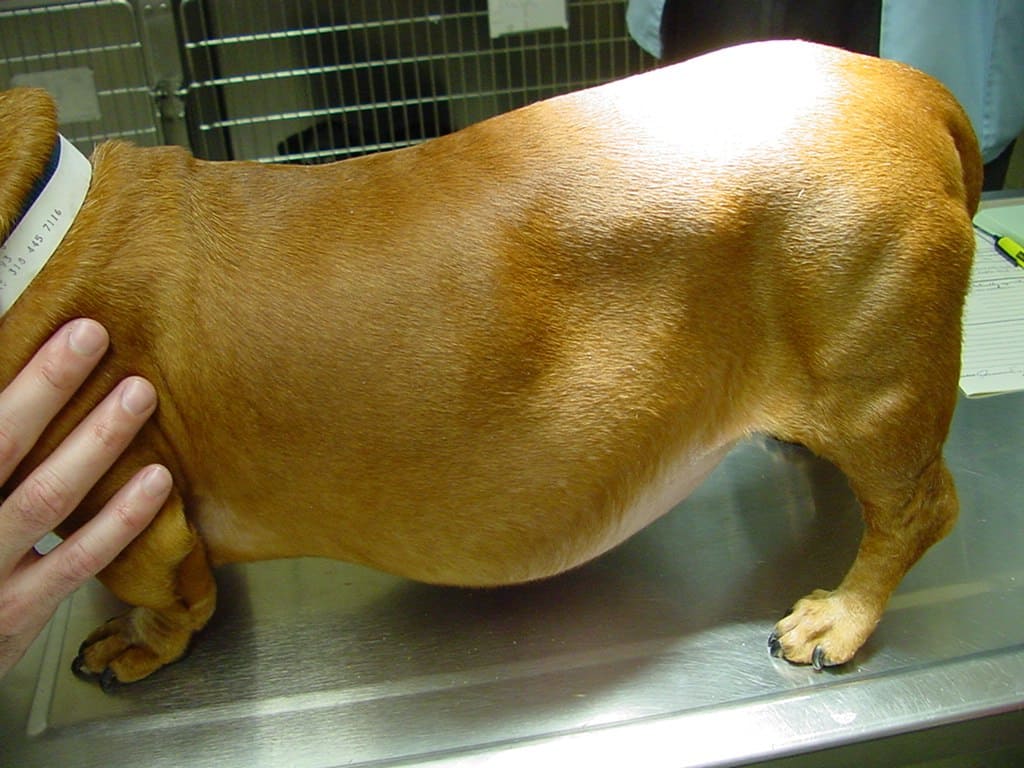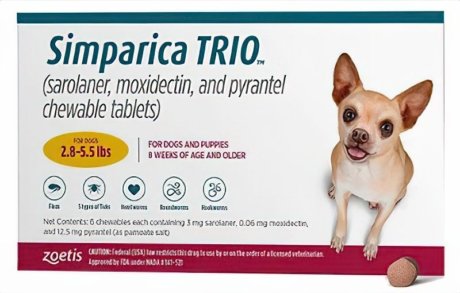Cushing’s Disease in Dogs: Understanding the Silent Culprit
Cushing’s disease, also known as hyperadrenocorticism, is a complex and increasingly prevalent condition affecting dogs. In this comprehensive guide, we will delve into the intricacies of Cushing’s disease in dogs. We’ll explore its causes, symptoms, diagnostic procedures, available treatments, and proactive measures to safeguard your beloved pet. Our goal is to provide you with a comprehensive understanding of this often-misunderstood ailment and its impact on our furry friends.
What is Cushing’s Disease in Dogs?
Cushing’s disease is a hormonal disorder characterized by the excessive production of cortisol, a naturally occurring steroid hormone. Cortisol plays a crucial role in regulating various bodily functions, including metabolism, immune response, and stress management. However, when cortisol is overproduced, it can lead to a cascade of health issues in dogs.

Recognizing the Symptoms of Cushing’s Disease in Dogs
Detecting Cushing’s disease in its early stages is crucial for effective management. Let’s delve into the common and subtle symptoms that can be indicative of this condition:
1. Increased Thirst and Urination
Dogs with Cushing’s disease often exhibit heightened thirst and consequently urinate more frequently. This increased water intake is often one of the first signs noticed by vigilant pet owners.
2. Hair Loss and Thin Skin
Alopecia, or hair loss, is a hallmark sign of Cushing’s disease. Additionally, affected dogs may develop thin, fragile skin that is prone to bruising and tearing.
3. Weight Gain
Interestingly, despite the increased thirst and urination, dogs with Cushing’s disease may experience unexplained weight gain, often accompanied by a distended or pot-bellied appearance.
4. Muscle Weakness
Cushing’s disease can lead to muscle wasting and weakness, resulting in decreased activity levels and overall stamina.
Diagnosis of Cushing’s Disease in Dogs
Diagnosing Cushing’s disease requires a nuanced approach and specific diagnostic tools. Here are the commonly employed methods by veterinarians:
1. Blood Tests
Blood tests serve as the foundation for Cushing’s disease diagnosis. They measure cortisol levels, providing crucial insights into whether they are elevated.
2. Urine Tests
Urine tests are employed alongside blood tests, offering valuable information regarding cortisol levels.
3. Imaging Studies
Sophisticated diagnostic tools such as X-rays and ultrasound scans are pivotal in identifying changes in the size and shape of the adrenal glands, aiding in the diagnosis of Cushing’s disease.
Treatment Options of Cushing’s Disease in Dogs
Once Cushing’s disease is diagnosed, several treatment options can be explored, tailored to the specific needs of the dog:
1. Medication
Commonly prescribed medications, such as trilostane or mitotane, are utilized to regulate cortisol levels in the body. These medications work by inhibiting the overproduction of cortisol and can significantly improve your dog’s quality of life.
2. Surgery
In certain cases, surgical intervention may be recommended to remove tumors from the adrenal or pituitary glands, depending on the specific type of Cushing’s disease. Adrenalectomy, the removal of an adrenal gland, is a potential surgical solution.
3. Dietary Management
Dietary modifications and the incorporation of supplements can support a dog’s overall health during the course of treatment. A well-balanced diet, low in fat and high in fiber, can assist in weight management and overall well-being.
Preventive Measures of Cushing’s Disease in Dogs
While Cushing’s disease may not always be preventable, proactive steps can be taken to mitigate the risk:
1. Regular Vet Checkups
Consistent veterinary visits are essential to monitor your dog’s health and promptly detect potential issues. Your veterinarian will conduct routine blood tests to screen for hormonal imbalances.
2. Stress Management
Creating a stress-free environment and minimizing anxiety can help reduce the likelihood of your dog developing Cushing’s disease. Stress management techniques, such as providing a calm and secure home environment, can be beneficial.
Understanding the Causes of Cushing’s Disease in Dogs

Hormonal Imbalance
Cushing’s disease primarily arises due to a complex hormonal imbalance within a dog’s body. Let’s explore this imbalance in more detail:
1. Pituitary-Dependent Cushing’s Disease
This variant of Cushing’s disease occurs when a tumor develops in the pituitary gland, leading to excessive cortisol production. The pituitary gland regulates cortisol production, and when it malfunctions due to a tumor, cortisol levels rise uncontrollably.
2. Adrenal-Dependent Cushing’s Disease
In this variation, tumors form in one or both adrenal glands, causing them to independently produce excessive cortisol. These tumors can be benign or malignant and disrupt the adrenal gland’s cortisol regulation.
3. Iatrogenic Cushing’s Disease
On rare occasions, Cushing’s disease can be triggered by the prolonged use of corticosteroid medications prescribed for unrelated health conditions. These medications mimic cortisol and can lead to an imbalance when used excessively.
Breed Predisposition
Certain dog breeds exhibit a higher susceptibility to Cushing’s disease. Notably, breeds such as Poodles, Dachshunds, and Terriers are more prone to developing this condition. While breed predisposition exists, Cushing’s disease can affect dogs of any breed or mixed breed.
Age and Gender
Older dogs, particularly those aged six and above, are at an elevated risk of developing Cushing’s disease. Additionally, female dogs tend to be slightly more predisposed to this ailment compared to males, although it can affect both genders.
Symptoms and Complications of Cushing’s Disease in Dogs

Variations in Symptoms of Cushing’s Disease in Dogs
Cushing’s disease can manifest differently in each dog, with some experiencing additional symptoms:
1. Increased Appetite
While some dogs may lose their appetite, others may develop an insatiable hunger, leading to significant weight gain. This increased appetite is often accompanied by begging for food.
2. Lethargy
Dogs affected by Cushing’s disease often appear lethargic, showing less interest in physical activity. They may spend more time resting and may be less willing to engage in play or exercise.
3. Skin Infections
The weakened immune system associated with Cushing’s disease can make dogs susceptible to skin infections and slow wound healing. Skin may become thin and easily injured.
4. Panting
Excessive panting, especially during the night, is another common symptom that may not be immediately linked to Cushing’s disease. Dogs may pant heavily even when at rest, and this can disrupt their sleep patterns.
Complications of Cushing’s Disease in Dogs
If left untreated, Cushing’s disease can lead to severe complications:
1. Diabetes
The hormonal imbalance can increase the risk of diabetes in dogs, requiring additional management. Dogs with Cushing’s disease may develop insulin resistance, leading to diabetes mellitus.
2. Heart Disease
Elevated cortisol levels can adversely impact the cardiovascular system, potentially leading to heart disease. Regular cardiac evaluations may be necessary for dogs with Cushing’s disease.
3. Hypertension
Dogs with Cushing’s disease may experience high blood pressure, which can have detrimental effects on their overall health. Hypertension can lead to organ damage, including damage to the kidneys and eyes.
Diagnosis and Tests of Cushing’s Disease in Dogs
Blood Tests of Cushing’s Disease in Dogs
Blood tests serve as the primary diagnostic tool for Cushing’s disease. Two commonly employed tests include:
1. ACTH Stimulation Test
This diagnostic test measures cortisol levels before and after the administration of synthetic ACTH, a hormone that stimulates cortisol production. Elevated post-test cortisol levels are indicative of Cushing’s disease.
2. Low-Dose Dexamethasone Suppression Test
The administration of dexamethasone, a synthetic corticosteroid, is used to measure cortisol levels in this test. Failure to suppress cortisol production indicates Cushing’s disease.
Urine Tests of Cushing’s Disease in Dogs
Urine tests are utilized alongside blood tests to provide valuable information about cortisol levels. An elevated urine cortisol-to-creatinine ratio supports the diagnosis of Cushing’s disease.
Imaging Studies of Cushing’s Disease in Dogs
Advanced imaging studies, such as ultrasound and computed tomography (CT) scans, play a pivotal role in identifying tumors within the adrenal or pituitary glands. These tests help determine the underlying cause of Cushing’s disease and guide treatment decisions.
Treatment and Management of Cushing’s Disease in Dogs

Medications of Cushing’s Disease in Dogs
1. Trilostane
Trilostane is a widely used medication that inhibits the excessive production of cortisol, effectively managing the symptoms of Cushing’s disease. It should be administered under veterinary supervision, with regular monitoring of cortisol levels.
2. Mitotane
Mitotane is another medication that can help regulate cortisol levels, although it may require careful monitoring due to its potency. It works by destroying cortisol-producing cells in the adrenal glands.
3. Ketoconazole
While less common, ketoconazole is sometimes used to manage Cushing’s disease by reducing cortisol production. It can be considered when other medications are ineffective or not well-tolerated.
Surgery of Cushing’s Disease in Dogs
1. Adrenalectomy
In cases of adrenal-dependent Cushing’s disease, surgical removal of the affected adrenal gland(s) may be necessary to curtail cortisol overproduction. Adrenalectomy offers the potential for a cure if the tumor is benign.
2. Transsphenoidal Surgery
For pituitary-dependent Cushing’s disease, transsphenoidal surgery involves the removal of the tumor from the pituitary gland. This procedure can be curative in some cases and requires specialized surgical expertise.
Dietary Management of Cushing’s Disease in Dogs
A well-balanced diet, low in fat and high in fiber, can support your dog’s overall health during the treatment phase. Consult your veterinarian for specific dietary recommendations tailored to your dog’s needs. Dietary modifications may be necessary to address weight gain or other nutritional concerns.
Living with Cushing’s Disease
Lifestyle Adjustments
1. Medication Compliance
Adhering to your veterinarian’s prescribed medication schedule is crucial for effective management. Ensure your dog receives medications as directed and report any side effects or concerns promptly.
2. Regular Vet Checkups
Frequent checkups are essential to monitor treatment progress and make necessary adjustments as needed. Routine blood tests and imaging studies may be conducted to assess the effectiveness of treatment.
3. Stress Reduction
Create a calm and stress-free environment for your dog, as stress can exacerbate symptoms. Reducing environmental stressors, providing a comfortable and secure space, and maintaining a consistent routine can help alleviate anxiety.
Long-Term Care of Cushing’s Disease in Dogs
Cushing’s disease often necessitates long-term management. Collaborate closely with your veterinarian to formulate a comprehensive care plan that ensures the best possible quality of life for your furry friend. Regular monitoring, including blood tests and imaging, will help track your dog’s progress and adjust treatment as needed.
Conclusion:
In summary, Cushing’s disease in dogs is a multifaceted condition that demands vigilance and proactive care from pet owners. Recognizing the symptoms early, seeking prompt veterinary attention, and diligently adhering to treatment plans are vital steps to ensure a better quality of life for your cherished canine companion. Remember that a well-informed and compassionate approach to your pet’s health is the cornerstone of keeping them happy and healthy.
Frequently Asked Questions:
-
Can Cushing’s disease be cured completely?
Cushing’s disease can often be effectively managed with treatment, but a complete cure may not be achievable in all cases. The goal of treatment is to control symptoms and improve your dog’s quality of life.
-
Is Cushing’s disease more common in certain dog breeds?
Yes, some breeds, including Poodles, Dachshunds, and Terriers, are more predisposed to developing Cushing’s disease. However, it can affect dogs of any breed or mixed breed.
-
Are there any natural remedies for Cushing’s disease in dogs?
While some natural supplements can support a dog’s overall health, they should not be relied upon as the sole treatment for Cushing’s disease. Consult with your veterinarian for guidance on complementary therapies.
-
Can Cushing’s disease be fatal?
Left untreated, Cushing’s disease can lead to severe complications that may, in some cases, be fatal. Early diagnosis and appropriate treatment can significantly improve your dog’s prognosis.
-
How can I best support my dog during Cushing’s disease treatment?
Work closely with your veterinarian to make necessary dietary changes, medication adjustments, and lifestyle modifications to support your dog’s well-being during treatment. Open communication and regular checkups are key to successful management.
-
Can Cushing’s disease affect a dog’s behavior?
Yes, Cushing’s disease can lead to changes in behavior, including increased irritability, restlessness, and changes in temperament. Observing and addressing these changes is important for your dog’s overall care and comfort.
-
Can Cushing’s disease cause gastrointestinal problems?
Cushing’s disease can impact the gastrointestinal system, potentially leading to symptoms such as vomiting and diarrhea. Consult your veterinarian for guidance on managing these issues and maintaining your dog’s nutritional balance.
-
Are there support groups or online communities for dog owners dealing with Cushing’s disease?
Indeed, there are numerous online communities and support groups where dog owners can share experiences, seek advice, and find solace in knowing they are not alone in managing Cushing’s disease in their beloved pets. Connecting with others who have faced similar challenges can provide valuable support and information.
-
Can Cushing’s disease affect a dog’s lifespan?
Cushing’s disease can impact a dog’s quality of life if left untreated, but with proper management, many dogs can live a fulfilling life. Early diagnosis and appropriate treatment are essential in extending your dog’s lifespan and maintaining their well-being.
-
Is it possible for Cushing’s disease to recur after successful treatment?
Yes, in some cases, Cushing’s disease may recur after successful treatment. Regular follow-up appointments with your veterinarian are crucial to monitor your dog’s condition and detect any signs of recurrence promptly.
-
How can I help my dog manage the side effects of Cushing’s disease medication?
Some dogs may experience side effects from Cushing’s disease medication. To help manage these side effects, consult your veterinarian, who may adjust the medication dosage or recommend additional supportive care. Monitoring your dog’s overall health and reporting any adverse effects is essential.
-
Are there any alternative or complementary therapies for dogs with Cushing’s disease?
While conventional treatment is often recommended for Cushing’s disease, some pet owners explore complementary therapies like acupuncture, herbal supplements, or dietary changes. Always consult with your veterinarian before incorporating any alternative treatments to ensure they are safe and appropriate for your dog’s specific case.
-
Can Cushing’s disease be prevented through lifestyle changes?
Cushing’s disease is primarily caused by hormonal imbalances or tumors, and it may not be preventable through lifestyle changes alone. However, maintaining a healthy diet, regular exercise, and minimizing stress can contribute to your dog’s overall well-being and potentially reduce the risk of other health issues.
-
What should I do if I suspect my dog has Cushing’s disease?
If you suspect your dog may have Cushing’s disease due to observed symptoms such as increased thirst, hair loss, or changes in behavior, schedule a vet appointment promptly. Your veterinarian will perform diagnostic tests to confirm the diagnosis and discuss treatment options.
-
Can Cushing’s disease affect a dog’s fertility?
Cushing’s disease can impact a dog’s reproductive system, potentially leading to irregular estrous cycles or reduced fertility. If you plan to breed your dog or have concerns about their reproductive health, consult your veterinarian for guidance.
Recommended:
Can Dogs Eat Strawberries: A Comprehensive Guide to This Scrumptious Fruit for Dogs
Can Dogs Eat Blueberries | Is it Safe? Benefits, 5 Risks, Health Issues





























